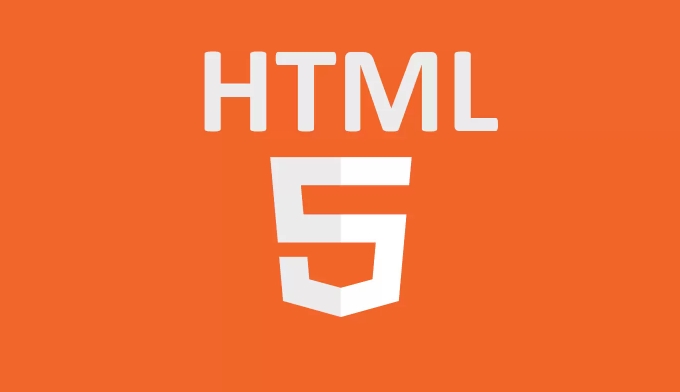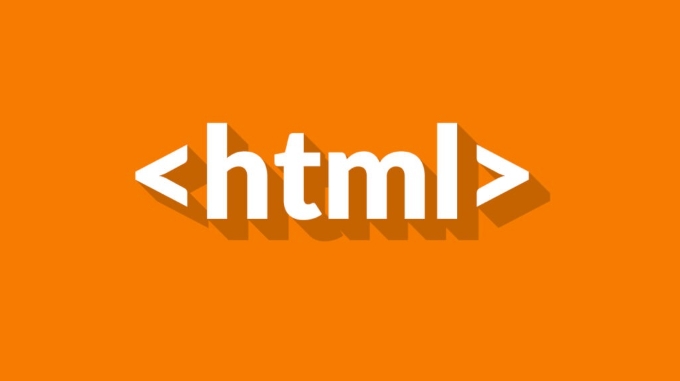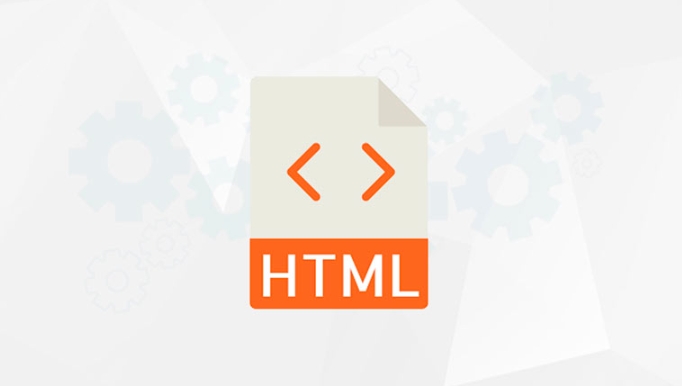HTML5 Geolocation API obtains user geolocation information through a browser. The enable method is to use navigator.geolocation.getCurrentPosition() to get the location, provided that the user authorization is. 1. First check whether the browser supports: if ("geolocation" in navigator); 2. Call the getCurrentPosition() method to obtain latitude and longitude; 3. Handle user permissions and errors. Notes include: it must run in an HTTPS environment, the mobile terminal is more accurate, the permission management of different browsers is different, the timeout mechanism and alternative solutions such as IP positioning are required. In actual development, prompts should be added to improve user experience and strengthen privacy protection.

HTML5 Geolocation API is a function provided by the browser that allows websites to obtain user's geographic location information. The core function of this technology is to allow users to automatically obtain their location when accessing certain services, such as for scenarios such as map location, weather query or recommendations from nearby merchants.

To implement this function, no complicated settings are required. As long as the user authorizes, the website can use JavaScript to call relevant interfaces to obtain latitude and longitude and other information.
How to enable the Geolocation API?
The call to the Geolocation API is very simple, and navigator.geolocation.getCurrentPosition() method is usually used to get the current location. But the premise is that the user must agree to the website's access to its location information.

A common practice is to check whether the browser supports this feature first:
if ("geolocation" in navigator) {
// You can use the Geolocation API
} else {
// The current browser does not support it}If supported, call the method to get the location:

navigator.geolocation.getCurrentPosition(
(position) => {
console.log("latitude:" position.coords.latitude);
console.log("longitude:" position.coords.longitude);
},
(error) => {
console.error("Failed to get location", error);
}
);It should be noted that users need to reauthorize each time they access, or they may permanently deny authorization. Therefore, in actual development, it is recommended to add error handling and prompt logic.
User Privacy and Permission Control
The Geolocation API involves user privacy, so the browser will pop up the permission request box asking the user whether to allow the website to obtain location information.
- If the user clicks "Allow", the website can be accessed once or continuously (depending on the settings).
- If the user selects "Block", the location cannot be obtained unless the browser settings are manually changed.
- Some browsers also support the "One Only" option, which allows only current access and still needs to be confirmed next time.
To improve the user experience, you can add a prompt before calling the API, such as: "We need to get your location to recommend nearby restaurants for you."
Things to note in practical applications
Although the Geolocation API is easy to use, there are some details that are easily overlooked in actual projects:
- More stable in HTTPS environments : Most modern browsers require that pages must run under HTTPS to enable positioning.
- The mobile terminal has higher accuracy : Compared with computers, the coordinates provided by mobile GPS are more accurate.
- Different browser behaviors vary slightly : For example, Firefox and Chrome may have different default behaviors in permission management.
- There may be a delay in getting the location : especially where the signal is weak, the timeout mechanism and loading status prompts need to be considered.
If you want the program to have alternative options when it cannot obtain the location, such as using IP geolocation as a guarantee, it can also be used in conjunction with third-party services.
Basically that's all. The Geolocation API is not complicated, but involves user authorization, browser compatibility and privacy issues. If you are not careful, you may make an error. By mastering the basic processes and common processing methods, you can flexibly use them in the project.
The above is the detailed content of What is HTML5 Geolocation API?. For more information, please follow other related articles on the PHP Chinese website!

Hot AI Tools

Undress AI Tool
Undress images for free

Undresser.AI Undress
AI-powered app for creating realistic nude photos

AI Clothes Remover
Online AI tool for removing clothes from photos.

Clothoff.io
AI clothes remover

Video Face Swap
Swap faces in any video effortlessly with our completely free AI face swap tool!

Hot Article

Hot Tools

Notepad++7.3.1
Easy-to-use and free code editor

SublimeText3 Chinese version
Chinese version, very easy to use

Zend Studio 13.0.1
Powerful PHP integrated development environment

Dreamweaver CS6
Visual web development tools

SublimeText3 Mac version
God-level code editing software (SublimeText3)

Hot Topics
 Explain the purpose of the role attribute in ARIA.
Jun 14, 2025 am 12:35 AM
Explain the purpose of the role attribute in ARIA.
Jun 14, 2025 am 12:35 AM
ARIA's role attribute is used to define the role of web elements and improve accessibility. 1. Role attribute helps assistive technology to understand the functions of elements, such as buttons, navigation, etc. 2. Use role attributes to assign specific roles to non-semantic HTML elements. 3. The role attribute should be consistent with the element behavior and be verified by the accessibility tool test.
 HTML and Design: Creating the Visual Layout of Websites
Jun 14, 2025 am 12:39 AM
HTML and Design: Creating the Visual Layout of Websites
Jun 14, 2025 am 12:39 AM
How to create a website layout? 1. Use HTML tags to define the content structure, such as, ,. 2. Control styles and positions through CSS, using box model, float or Flexbox layout. 3. Optimize performance, reduce HTTP requests, use cache and optimize images, and ensure responsive design.
 How can you ensure your HTML code is readable and maintainable?
Jun 10, 2025 am 12:06 AM
How can you ensure your HTML code is readable and maintainable?
Jun 10, 2025 am 12:06 AM
Improve the readability and maintainability of HTML code can be achieved through the following steps: 1. Use semantic tags, such as, etc. to make the code structure clear and improve SEO effect; 2. Keep the code formatted and use consistent indentation and spaces; 3. Add appropriate comments to explain the code intention; 4. Avoid excessive nesting and simplify the structure; 5. Use external style sheets and scripts to keep the HTML concise.
 How do I stay up-to-date with the latest HTML standards and best practices?
Jun 20, 2025 am 08:33 AM
How do I stay up-to-date with the latest HTML standards and best practices?
Jun 20, 2025 am 08:33 AM
The key to keep up with HTML standards and best practices is to do it intentionally rather than follow it blindly. First, follow the summary or update logs of official sources such as WHATWG and W3C, understand new tags (such as) and attributes, and use them as references to solve difficult problems; second, subscribe to trusted web development newsletters and blogs, spend 10-15 minutes a week to browse updates, focus on actual use cases rather than just collecting articles; second, use developer tools and linters such as HTMLHint to optimize the code structure through instant feedback; finally, interact with the developer community, share experiences and learn other people's practical skills, so as to continuously improve HTML skills.
 How do I use the element to represent the main content of a document?
Jun 19, 2025 pm 11:09 PM
How do I use the element to represent the main content of a document?
Jun 19, 2025 pm 11:09 PM
The reason for using tags is to improve the semantic structure and accessibility of web pages, make it easier for screen readers and search engines to understand page content, and allow users to quickly jump to core content. Here are the key points: 1. Each page should contain only one element; 2. It should not include content that is repeated across pages (such as sidebars or footers); 3. It can be used in conjunction with ARIA properties to enhance accessibility. Usually located after and before, it is used to wrap unique page content, such as articles, forms or product details, and should be avoided in, or in; to improve accessibility, aria-labeledby or aria-label can be used to clearly identify parts.
 How do I create a basic HTML document?
Jun 19, 2025 pm 11:01 PM
How do I create a basic HTML document?
Jun 19, 2025 pm 11:01 PM
To create a basic HTML document, you first need to understand its basic structure and write code in a standard format. 1. Use the declaration document type at the beginning; 2. Use the tag to wrap the entire content; 3. Include and two main parts in it, which are used to store metadata such as titles, style sheet links, etc., and include user-visible content such as titles, paragraphs, pictures and links; 4. Save the file in .html format and open the viewing effect in the browser; 5. Then you can gradually add more elements to enrich the page content. Follow these steps to quickly build a basic web page.
 How do I create checkboxes in HTML using the element?
Jun 19, 2025 pm 11:41 PM
How do I create checkboxes in HTML using the element?
Jun 19, 2025 pm 11:41 PM
To create an HTML checkbox, use the type attribute to set the element of the checkbox. 1. The basic structure includes id, name and label tags to ensure that clicking text can switch options; 2. Multiple related check boxes should use the same name but different values, and wrap them with fieldset to improve accessibility; 3. Hide native controls when customizing styles and use CSS to design alternative elements while maintaining the complete functions; 4. Ensure availability, pair labels, support keyboard navigation, and avoid relying on only visual prompts. The above steps can help developers correctly implement checkbox components that have both functional and aesthetics.
 What is an HTML tag?
Jun 13, 2025 am 12:36 AM
What is an HTML tag?
Jun 13, 2025 am 12:36 AM
HTMLtagsareessentialforstructuringwebpages.Theydefinecontentandlayoutusinganglebrackets,ofteninpairslikeand,withsomebeingself-closinglike.HTMLtagsarecrucialforcreatingstructured,accessible,andSEO-friendlywebpages.






